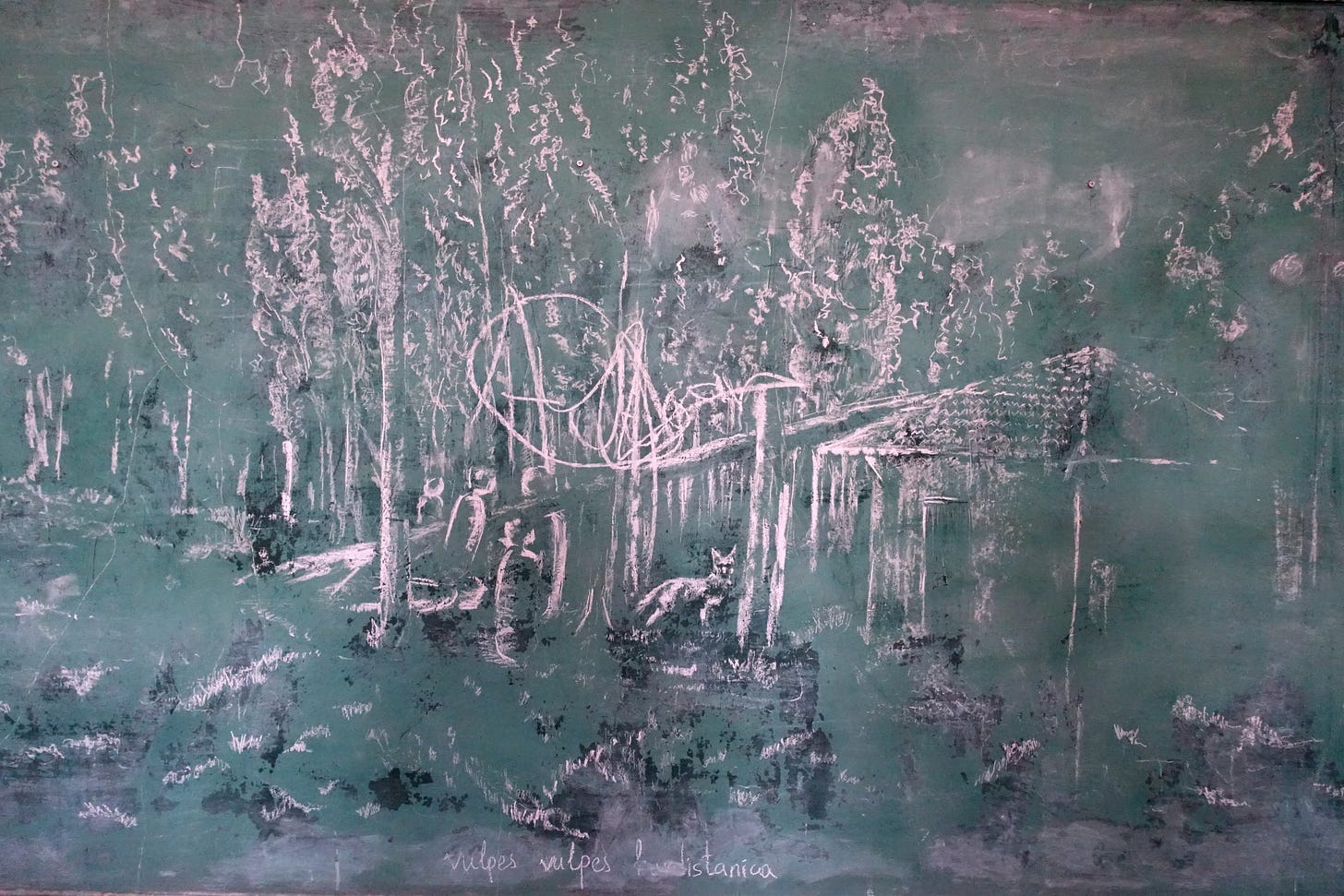Mahalla Festival: Memento
The past is ever-present in a new cross-cultural exhibition in Istanbul
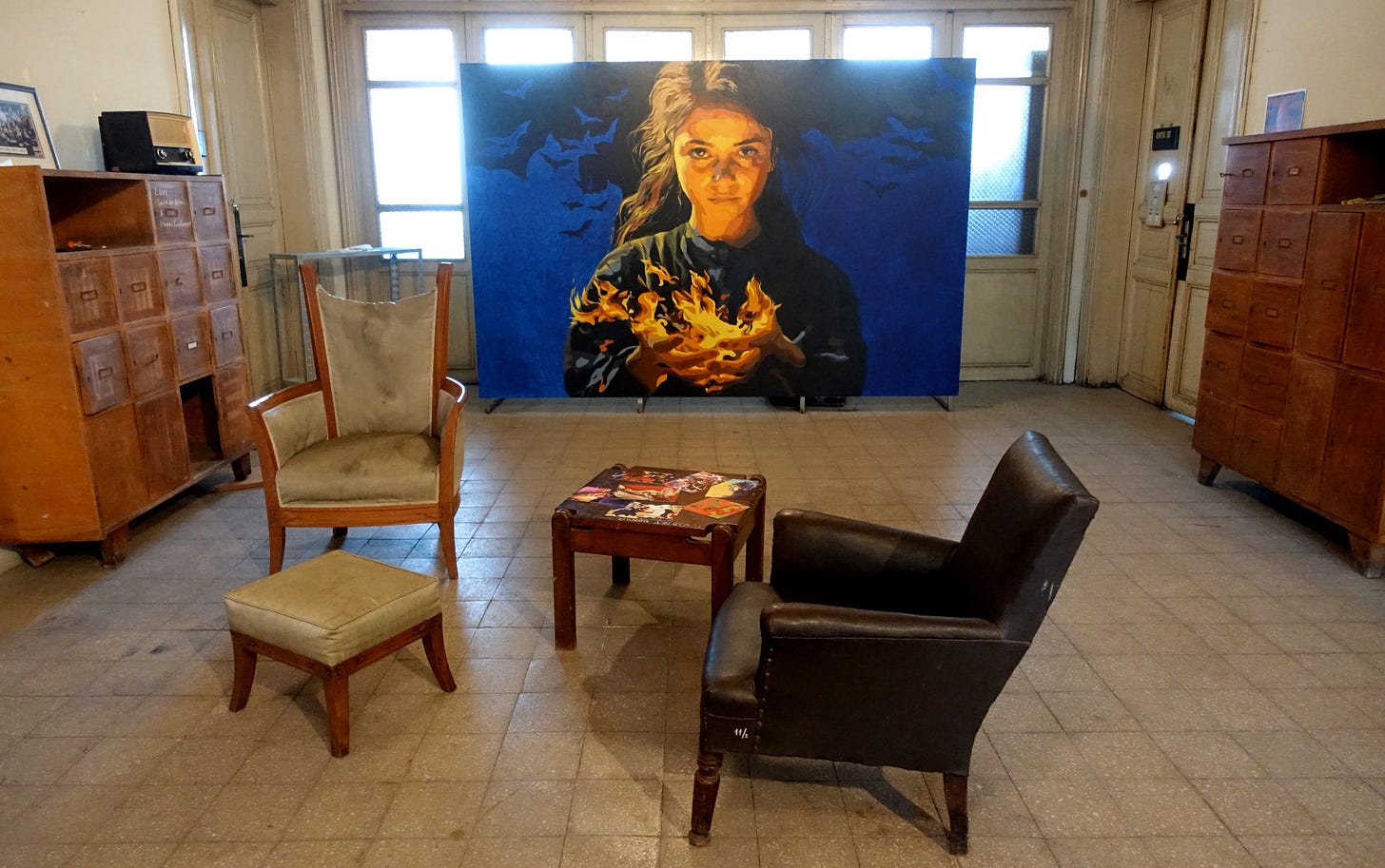
The blazing eyes of a young Afghan girl, her face illuminated by the fire cradled in her palms, stare out from inside the open door of an abandoned school in Istanbul’s historic Fener neighborhood. Created by Kabir Mokamel from the Afghanistan artists’ collective ArtLords, the mural, called “Phoenix,” welcomes visitors into the central exhibition of this year’s Mahalla Festival.
Established in 2017 as a response to the Syrian migration crisis – and the reaction against refugees in Turkey and European countries – Mahalla is a network of artists and cultural initiatives bringing together people from migrant groups and host countries. The name (with slight spelling variations) refers to a neighborhood or small community in Turkey, the Arabic-speaking world, the Balkans, Iran, India, and other countries.
“It’s an example of a connecting point, it calls for listening to how others are making their mahalle and what they have to say,” said Sabine Büsch, the Mahalla Festival’s Artistic Director. Since its founding, the annual festival has been expanded to be held in other countries (and online, due to Covid-19) and to address additional topics such as climate change and urban change, always using art as a way of communicating and connecting.
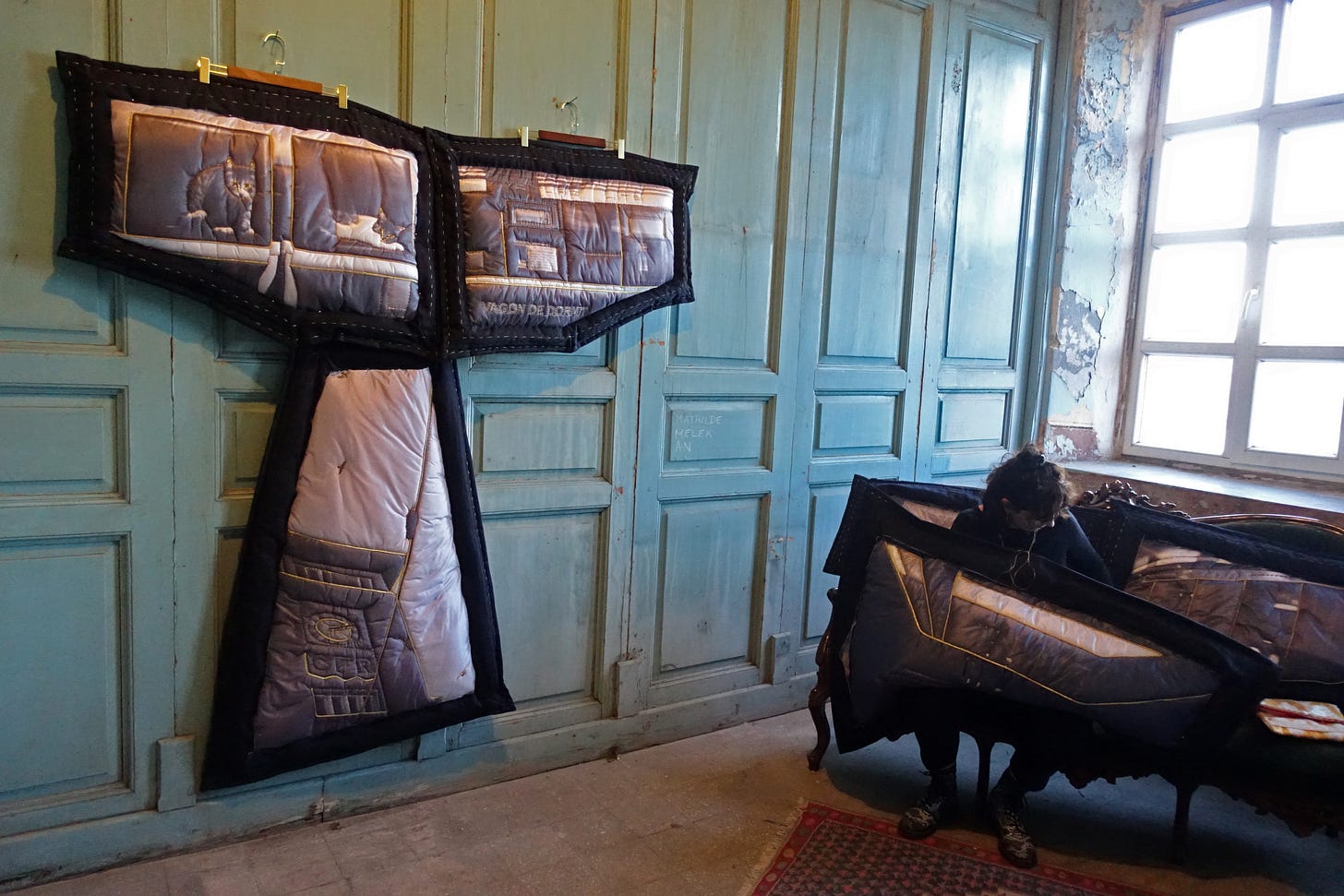
This year’s theme, Memento, “is about things that have been overlooked and forgotten,” Büsch said. “It was very much inspired by the Kahramanmaraş earthquake in 2023 and this idea of a memento mori – never forget that you have to die, never forget to live.” Though less than two years ago, the earthquake which killed more than 55,000 people in Turkey and Syria has already faded in the news. But its impact is remembered in Talin Gülen Schenk’s raw gestural sketches, displayed in a classroom on the ground floor, which seem to depict figures hovering between life and death.
The exhibition venue, the Phanar Ioakimion Greek High School for Girls, is itself a memento of sorts. Now open only occasionally for exhibitions like this one, the once-grand building with a splendid view over the Golden Horn was constructed in 1879 and used as a school until 1988. After that it was shuttered due to a lack of students – the result of decades of economic and social pressure against Istanbul’s indigenous Greek (Rum) community, which was subjected to violent attacks in 1955.
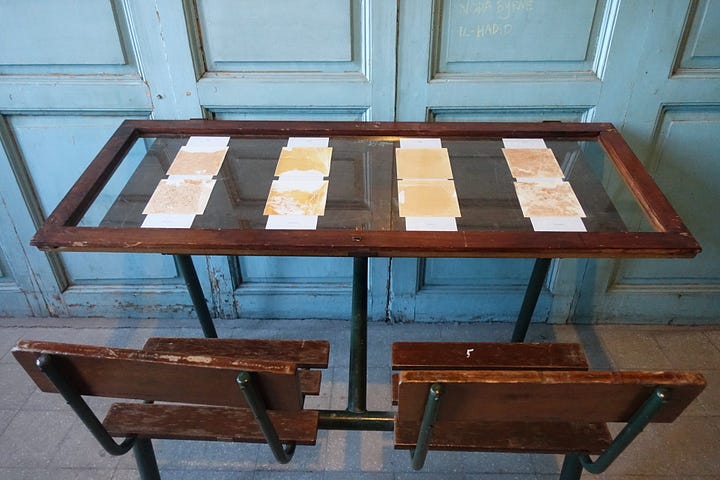
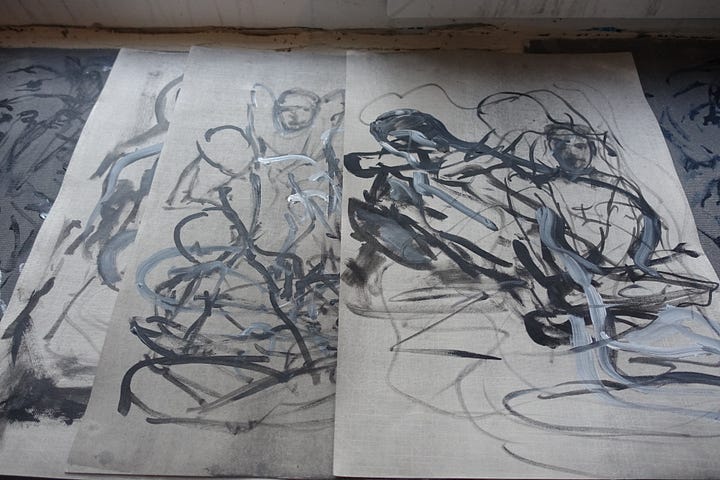
Given that history, it’s an especially fitting location for the works in the Memento exhibition that focus on closed schools in Afghanistan, which Büsch says is one of the festival’s key themes this year. Upstairs in another abandoned classroom, Shira Badakshi’s cartoons and research documentation about the “Progressive Royals” – King Amanullah Khan and Queen Soraya Tarzi, who advocated for girls’ education and women’s emancipation in the 1920s – are displayed on old desks facing Lida Hamid’s video of boys and girls in class together in Kabul just months before the Taliban took over and banned education for girls above grade six. (In an example of history echoing back on itself, Turkey was one of the places Queen Soraya sent Afghan girls to study; today, it’s one destination for Afghans fleeing the Taliban’s repressions.)
One of Mahalla’s guiding principles is to create art and stories with, not just about, members of affected communities. For the Afghan artists involved in this year’s exhibition, some of whom are in exile, some still in Afghanistan, this has often meant receiving digital transfers of their work, sometimes through secure methods, and giving the artists who can’t attend in person Zoom tours of the exhibition.

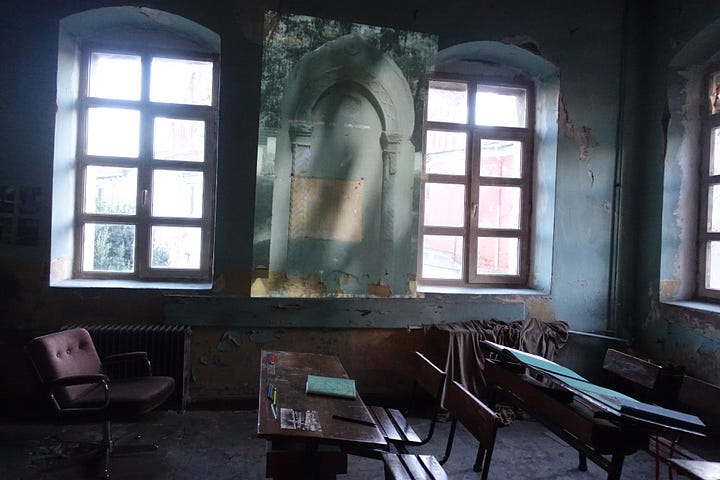
Participating artists from other countries are delving into different eras and geographies of forgotten history. The memorial stone projected onto a classroom wall as part of Margarita Wenzel’s installation is one of the scant remnants of a little-known WWI-era prisoners-of-war camp in Germany (then in a military alliance with the Ottoman Empire) for Muslim soldiers who had fought for the Allies. The camp mosque, which Wenzel has sketched onto a chalkboard, was the first to be built in Germany, part of unsuccessful efforts to propagandize the soldiers into switching sides.
The long-lost physical remnants of another war became an artistic medium for Istanbul-based American artist Nora Byrne, whose abstract monoprints were made using the paper marbling technique known in Turkish as ebru, but with “paint” formed by rusted bits of an iron bridge destroyed during WWII combat on Malta and now dissipating into seawater. In the same room, French-Turkish artist Mathilde Melek Arı is using traditional gold thread embroidery to sew digital prints of images taken on her train journey from Istanbul to Paris, following a journey her father made on the Orient Express, into a voluminous padded caftan, combining new technology with her family history in textiles.
Following on a recent gallery show that explored the Turkish government’s stripping of the Latin words for “Armenia(n)” and “Kurdistan” from the names of endemic animal species, artist Larissa Araz participated in this exhibition by drawing a chalkboard scene of one of these animals, a red fox subspecies, in a forest clearing. A week after the exhibition’s opening, a handprinted note had been tacked next to the chalkboard: “This work has been vandalized by anonymous visitors on 17.11.24. We apologize to the artist.”
The past, as it seems we have to be repeatedly reminded, is never really behind us.
Mahalla Festival events:
Memento exhibition (through 29 November) – Ioakimion Greek Girls High School (Yuvakimyon Rum Kız Okulu), Tevkii Cafer Mektebi Sokak No, 10, Balat, Fatih. Open Tue-Sun 11am to 6pm.
Opening Ceremony of the Mural ‘Phoenix’ by Kabir Mokamel (ArtLords) – Ioakimion Greek Girls High School, 23 November from 5-6pm (TODAY) ⏰
New Voices from Afghanistan: Film, Podcast and Poetry with Shahzad Mudasır, Mitwa Kabir, Vega Moqarabi and others – At the Ioakimion Greek Girls High School and online (scroll down to the end of the page for details), 29 November from 5-7pm.
Closing Event: Theatre – Museum of Monologues (3-5pm) and Carmen (6-7pm). Ioakimion Greek Girls High School, 30 November from 5-7pm. In Turkish.




